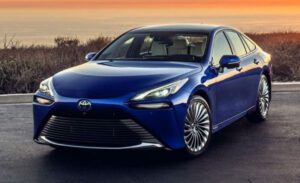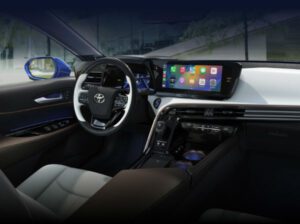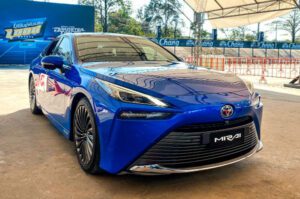2026 Toyota Mirai
The 2026 Toyota Mirai is a hydrogen fuel cell electric vehicle (FCEV) manufactured by Toyota. The 2026 Toyota Mirai operates by converting hydrogen into electricity, with water vapor as its only tailpipe emission. In its second generation, the Mirai offers a long driving range comparable to a petrol vehicle and a quick refueling time of around five minutes. The current second-generation Toyota Mirai 2026 uses a fuel cell system to convert hydrogen and oxygen into electricity, with the only tailpipe emission being water vapor.
The Toyota Mirai is a hydrogen fuel cell electric vehicle (FCEV) that produces no tailpipe emissions. The 2026 model year offers a refined and quiet driving experience with petrol-like range. The Toyota Mirai offers a quiet and refined ride on a rear-wheel drive platform, its performance greatly limited by the limited hydrogen refueling infrastructure, a major obstacle for many buyers outside of certain states such as California.
2026 Toyota Mirai : Interior
The Toyota Mirai has a premium interior with a beautiful, minimalist design that emphasizes comfort and technology. The materials and finishes are of a high standard, including Toyota’s high-end Lexus brand. The dashboard features a large 12.3-inch multimedia screen that seamlessly integrates with the fully digital instrument cluster, offering wireless Apple CarPlay® and Android Auto™ compatibility. The controls are conveniently arranged, and features such as wireless smartphone charging, a high-quality JBL® sound system, and personalized ambient lighting contribute to a modern and luxurious cabin environment.
Despite its car-like length, the Mirai’s interior packaging is hampered by the placement of its hydrogen fuel tanks and battery. A tall center console extends through the cabin, which affects rear seat legroom and creates a tight fit under the front seats. Although the Mirai seats five people, it is the middle rear passenger who is most affected by this design. Additionally, boot space is smaller than one would expect for a sedan of its size, as the fuel system is located in the cargo area.
2026 Toyota Mirai : Engine
The Toyota Mirai is a hydrogen fuel cell electric vehicle (FCEV), and as such, does not have a conventional internal combustion engine. Instead, it is powered by an electric motor. The vehicle’s electricity is generated by a fuel cell stack, a component that uses hydrogen from the vehicle’s fuel tank and oxygen from the air to create electricity through a chemical reaction. This process is highly efficient and creates no harmful exhaust emissions, producing only water vapour. A lithium-ion battery is also used to store energy and provide additional power when needed, such as during rapid acceleration.
The Mirai’s powertrain is a combination of fuel cell and hybrid technology, known as the Toyota Fuel Cell System (TFCS). The TFCS system powers an electric motor that produces 182 horsepower and 221 lb-ft of torque, sending power to the rear wheels. In addition to the electric motor, fuel cell stack, and battery, the powertrain includes high-pressure hydrogen tanks and a boost converter. This design results in a quiet and smooth driving experience, with the same rapid torque delivery as a battery electric vehicle.
2026 Toyota Mirai : Safety
The Toyota Mirai has received high safety marks, with a five-star safety rating from the crash testing authorities Euro NCAP and ANCAP, which confirmed that the hydrogen fuel cell power train has no negative impact on the inherent safety of the vehicle. The vehicle is equipped with the full Toyota Safety Sense 3.0 suite (TSS 3.0), which includes a Pre-Collision System with pedestrian and cyclist detection, full-speed active radar cruise control, lane departure warning with navigation assistance, and road sign assistance. To ensure the integrity of the hydrogen system, the Mirai has strong, carbon fiber reinforced tanks and highly sensitive hydrogen sensors that can detect any potential leaks and automatically shut down the system, while the body structure is specifically designed to channel and absorb the energy of the impact away from vital components and the cabin.




